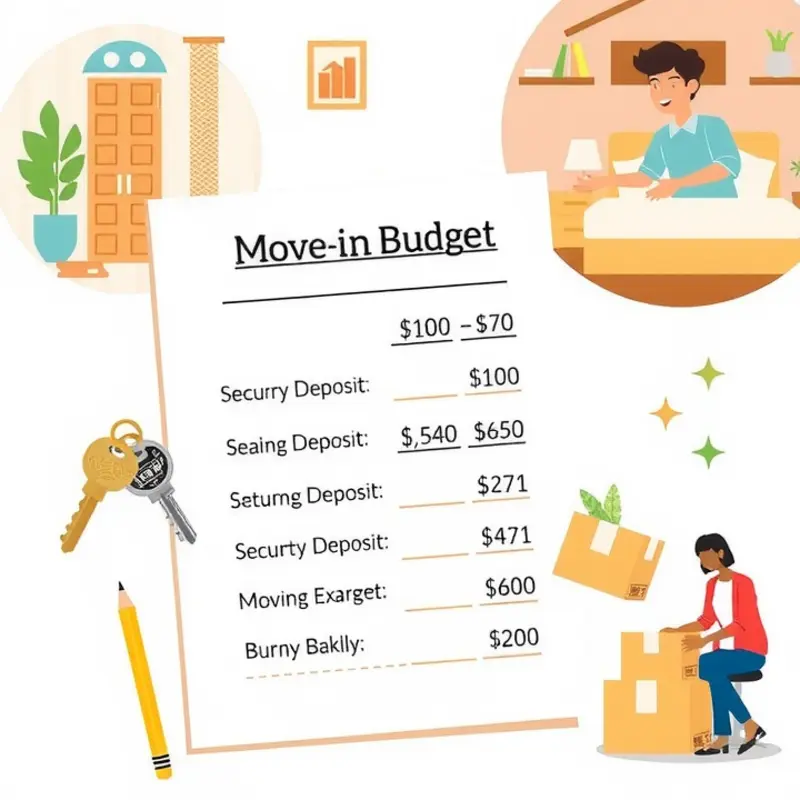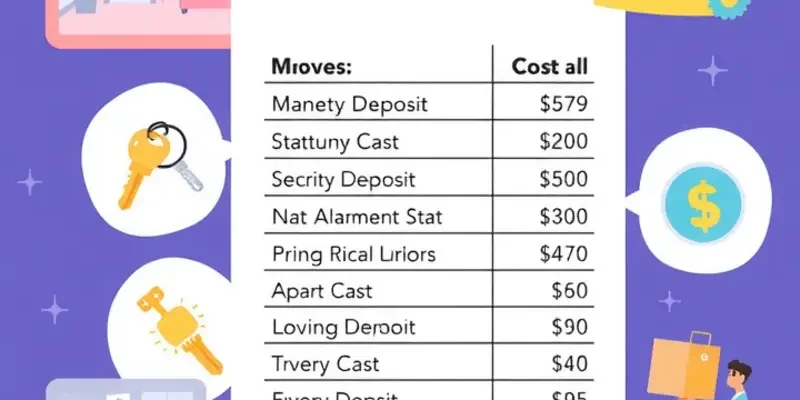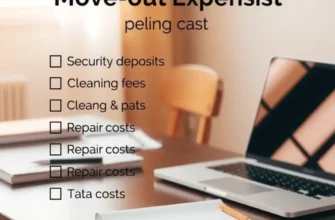Moving into a new place often brings a whirlwind of excitement, but it can also come with its fair share of financial uncertainty. Whether you’re a young professional stepping into the rental market for the first time, a student juggling expenses, a couple searching for a cozy apartment, or a family settling into a new neighborhood, understanding move-in costs is essential. Knowing what to expect financially can help reduce stress and ensure a smoother transition. From security deposits to furniture needs, budgeting for move-in costs requires meticulous planning. By breaking down these costs and preparing your finances accordingly, you can enjoy your new home without the burden of unexpected expenses. This guide will provide practical tips and clear insights to help you navigate the budgeting process, ensuring you’re well-equipped for the journey ahead.
Understanding Move-In Costs: What to Expect

When moving into a new rental, understanding and managing your move-in costs is crucial. These expenses can add up quickly, impacting your budget significantly if not anticipated. The first significant cost is typically the security deposit. Usually equivalent to one month’s rent, this deposit acts as a safeguard for the landlord against any potential damage or unpaid rent. It’s crucial to inspect the property thoroughly during the initial walkthrough to ensure you reclaim your deposit when you move out.
Next, prepare to pay the first month’s rent upfront, which is standard practice and due before or on the day of move-in. In some cases, a landlord may also require the last month’s rent as part of the security measures, doubling the initial financial demand.
Another often overlooked cost is utility setup fees. Establishing new accounts for electricity, water, gas, and internet often comes with activation charges. It’s advisable to contact each service provider before moving to inquire about these fees. Comparing rates and seeking bundled services can also help reduce these costs.
Be conscious of unexpected costs that may arise, such as pet deposits if you’re moving with a furry friend. Some rentals demand non-refundable pet fees or monthly pet rent. Additionally, factor in the cost of default renters insurance, which is often required by landlords to cover potential damages or liabilities.
You may also encounter moving costs, encompassing truck rentals, gas, and any hired services. Be sure to get multiple quotes to find the best deal, and consider moving during weekdays or non-peak seasons to save money.
To estimate these costs accurately, start by listing all potential expenses. By doing so, you ensure no surprises disrupt your financial plans. Keep a buffer in your budget for unforeseen expenses, and always review your lease agreement thoroughly to catch all cost-related clauses. Before signing any lease agreements, consider consulting resources such as Resolving Rental Billing Errors to familiarize yourself with common financial pitfalls.
Finally, managing these expenses effectively requires a prudent approach. Open a dedicated savings account for your moving expenses months ahead. This helps distribute the financial burden over time, allowing you better manage day-to-day expenses alongside saving for your move. Planning and foresight are crucial in making your move as stress-free and financially sound as possible.
Tips for Creating a Move-In Budget

Creating a move-in budget requires careful consideration of various expenses and a strategic approach to manage them effectively. Let’s explore key strategies to help you craft a tailored budget that ensures a smooth transition to your new rental.
First, begin by listing all potential move-in costs. Common expenses include security deposits, first and last month’s rent, moving supplies, and utility setup fees. Prioritize these costs by necessity and deadline, focusing on what needs immediate attention.
Next, establish a realistic timeline for these expenses. Avoid last-minute surprises by preparing for major costs well ahead of time. Spread out payments, if possible, to lessen the financial burden during your move-in month. This approach allows you to plan better and ensures each cost fits seamlessly within your overall budget.
Tracking spending is essential. Use a spreadsheet or budgeting app to note every expense. This not only helps in accountability but also offers a clear picture of your financial situation. Regularly update this document to analyze your spending patterns and adjust accordingly.
Finding areas to save can significantly ease your financial load. Consider purchasing second-hand furniture or renting a moving truck during off-peak times to reduce costs. When it comes to utilities, inquire about any setup promotions that might lower initial fees.
Adjusting your budget based on your unique rental situation is key. If your new rental includes utilities, this could ease your monthly financial commitments. Conversely, if certain utilities are not covered, calculate these into your monthly projections.
Enhance your budgeting skills with financial planning practices. Consider setting aside a small contingency fund for unexpected expenses. For additional budgeting tips, you might find valuable insights in various financial planning guides, specifically tailored for renters.
Navigate your move-in costs efficiently by following these strategies diligently. Implementing a structured approach to budgeting will help you manage your finances without feeling overwhelmed and facilitate a smooth transition into your new home.
Final words
Budgeting for move-in costs doesn’t have to be an overwhelming task. By understanding the potential expenses and creating a structured plan, you can navigate your move confidently. Remember to remain flexible as you adjust to unexpected costs, and don’t forget the value of setting aside a small emergency fund. With careful planning and a positive approach, you can settle into your new home smoothly, allowing you to focus on what truly matters: creating happy memories in your new space.









